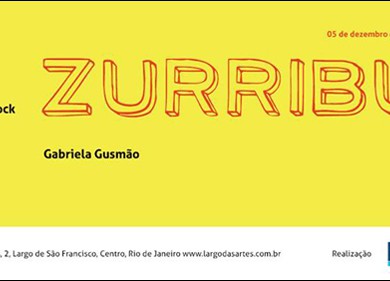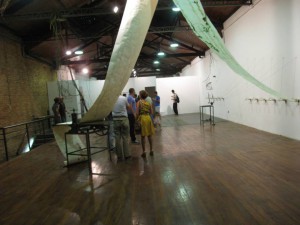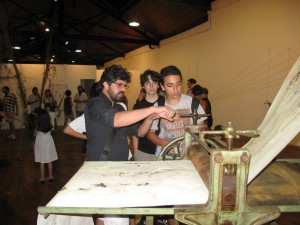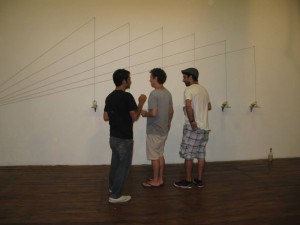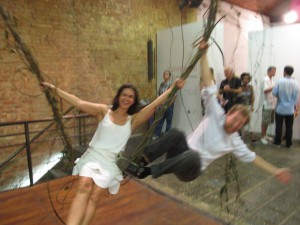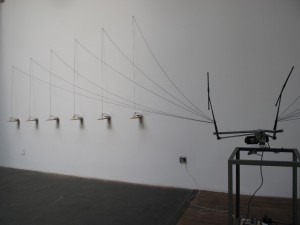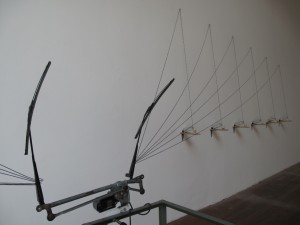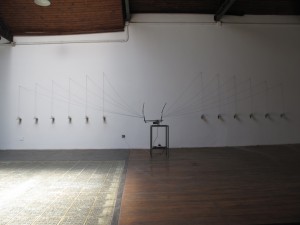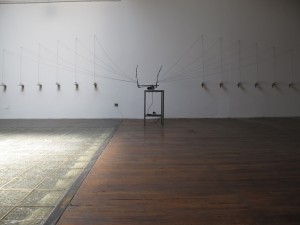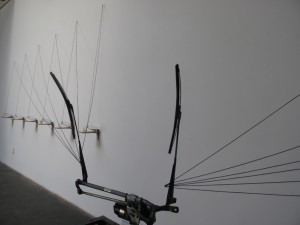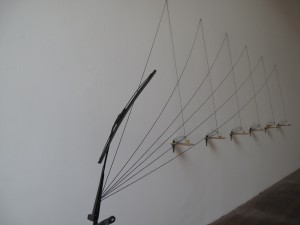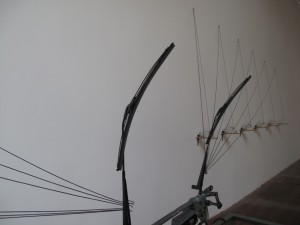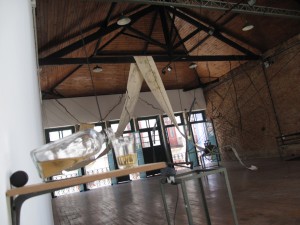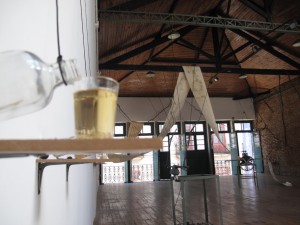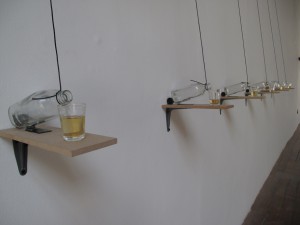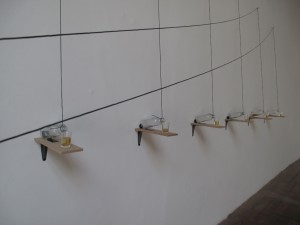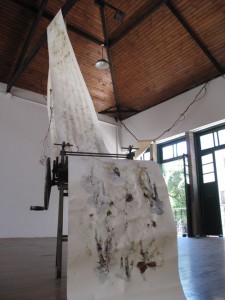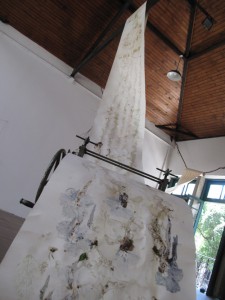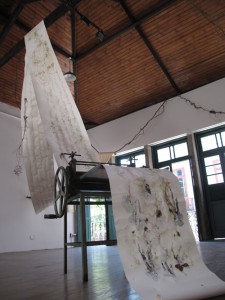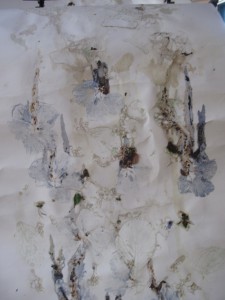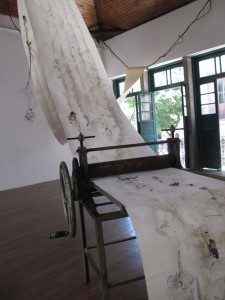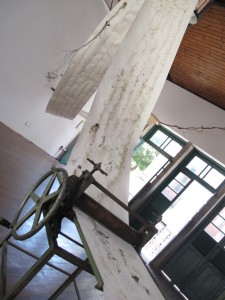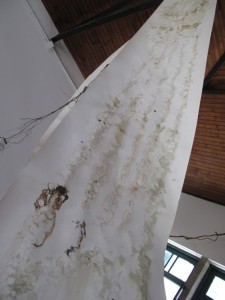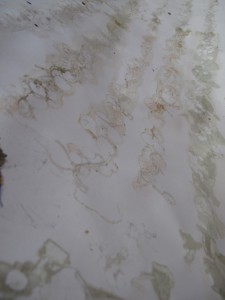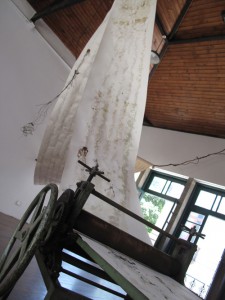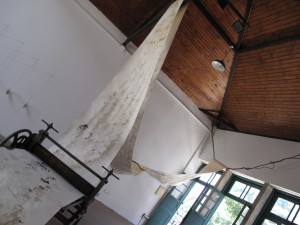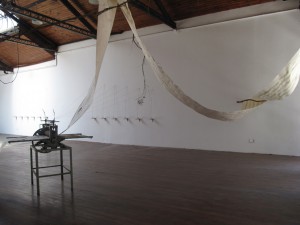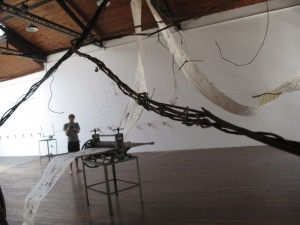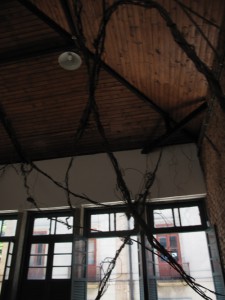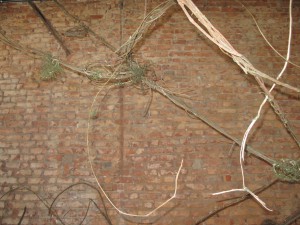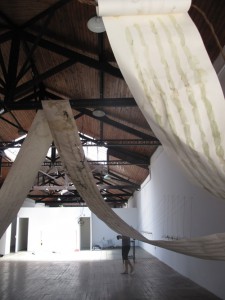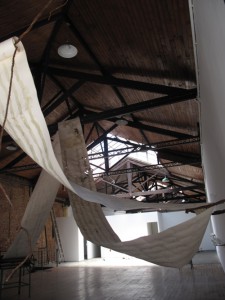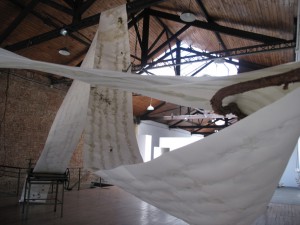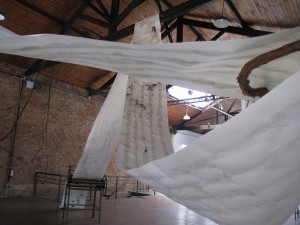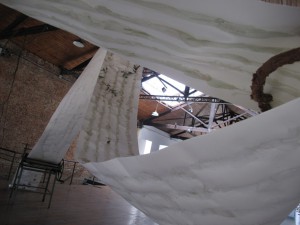Gabriela & Anton – The Drifters
by Marta Mestre
Before we speak of the encounter of the drifters, we have to speak of solitude, the propitious condition for things to start to happen.
Only those who work in inevitably absolute solitude are capable of populating it, not with dreams, fantasies or projects, but with encounters. “You find people (sometimes you don’t know them, or have never even seen them before), but also movements, ideas, events, entities,” writes Deleuze.
This populated solitude is how one would describe the encounter between Anton Steenbock (1984) and Gabriela Gusmão (1973). Artists from different generations and followers of different trajectories, educated in “antipodean” geographical realities, they now share a tiny 30 square meters in a workshop in the centre of Rio de Janeiro.
What unites them are not common ideas, nor themes or research lines to which they have dedicate themselves, but the possibility of speaking about something that exists between the two of them, outside of them, that runs in parallel to them, like a zig-zag that affects them and perturbs them. This is why efforts to analogise between them are in vain. To me, the encounter between a Brazilian who lives with the world, and a German who found himself here, turned out to be for me (a Portuguese in flux) an exercise in translation.
Gabriela brought us two enigmas to decipher: “zurriburi” and “drifters.” From this starting point, we sought to cultivate a soil with neither roots nor sediments (the music, free of its aerial vines, entering the artisan’s press), relying only on the minimum sustenance necessary to orient the action (the invisible maestro who conducts the atonal score of Anton Steenbrock).
“Zurriburi” is almost a linguistic noise, a loud sound – zurrriburiiiii – and it also refers to a “despicable” or “insignificant” person. What about a “drifter,” subject to a lazy, idle existence?
Anton: hello my dears, I’ve worked up this concept, I will try to to write it out tonight and sent it by email…. it’s turning out well! – I’ve also managed to fix the windshield motor (it was a mission!!!) and on Monday I’ll test it out. I had another look to better understand the word “drifter”, I think I understand it now…might it not mean, in other words, someone who is“there by chance”?!?!
Gabriela: To me, it is someone who is open to unexpected situations, who has submitted to the reveries and the possibilities of extraordinary discoveries (…). He is ready to live synchronous or “chance” experiences. The meaning that you’ve discovered is totally well-founded. I also recognise the idea of someone who walks without a fixed destination, rambling, and in that way starts to daydream. A drifter is not necessarily a person who is idle, but a person who lives life in an idle fashion. A Zurriburi strolls around as if in a daydream throug h a crowd, or in an idyllic landscape, and might knock up againts a good idea or a melody. I knocked up against one such idea myself, the notion of the “silence of the drifter”. Does this message help explain things, or does it confuse things further?
Marta: Hello Gabi and Anton. While Gabi’s title is very suggestive, you need a lot of mental gymnastics and rhetoric to relate Zurriburi to the Dovstoyevskian “idiot” and the “drifter”. Even so, I can see in this fallow land the potential for constructing meanings, even if only provisional ones. There is an element of going back and learning how to speak, and I still think art, and artists, give form to something indeterminate. Like the idiots, the “fools” or even the Christian hermits who removed themselves to live another kind of experience in the world, artists too have their own singularity, which is fragile and provisional. I also see our attempts to “construct” something that is so provisional in nature (starting with language itself), as being a very Brazilian cultural mark. In this sense it is also a very Portuguese one, which begins with the formation of Brazil and leads to our contemporary ignorance about each other.
We did not reach many conclusions, and followed starting points without seeing where they would lead us. This is how it usually works, and until the exhibit was assembled, each person’s work ended up moving in unpredictable directions, which gave them their unpredictable relevance.
Nevertheless, throughout our encounter, I kept trying to make sense of something that the artists themselves had brought as a link. Without ever having said anything to each other, they both deal with seagulls in their work. In Gabriela Gusmão’s work, they appeared as large metal sheets on the external wall of the Gentil Carioca gallery (2012), and in Anton’s work they appeared in “Gaivotas”, a book of anonymous graffiti markets from the streets of Rio de Janeiro (2010).
Through the seagull, the focus of a common interest pursued down very different artistic tracks, the artists found each other in a unique series of transformations that they do not share, but that affects them and perturbs them.
It ends up making sense that what brings them together are birds. They are also “drifters” in the freedom of the skies, breaking rules, capable ot covering long distances on a solitary trajectory, like people, like artists.
Pictures Gallery
